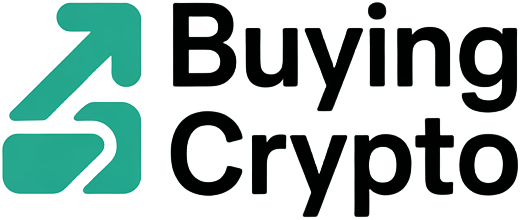As Bitcoin maintains its position above the $100,000 threshold, currently trading at $109,581.00, Germany finds itself at the center of a pivotal debate that could reshape the European crypto landscape. The Alternative for Germany (AfD) party has thrust Bitcoin into the national spotlight by proposing a motion to establish a national Bitcoin reserve and carve out Bitcoin-specific regulations distinct from broader EU frameworks. This move not only signals a potential shift in German financial policy but also raises fundamental questions about crypto onboarding, investor protection, and monetary sovereignty across the European Union.
Germany’s National Bitcoin Reserve Proposal: A Strategic Pivot?
The AfD’s motion argues that Bitcoin’s decentralized structure and capped supply make it a unique hedge against inflation and currency volatility. By advocating for a reserve equaling 2% of total Bitcoin supply, Germany would join France in considering sovereign-level crypto holdings – an unprecedented step among major economies.
This proposal comes at a time when mainstream German parties have approached digital assets with caution, citing concerns around volatility, security, and regulatory compliance. Yet, the AfD’s initiative reflects growing recognition of Bitcoin as digital gold, particularly as traditional monetary policies face scrutiny amid persistent inflationary pressures in Europe.
Regulatory Divergence: AfD’s Push for Bitcoin-Specific Rules
A key element of the debate is whether Bitcoin should be regulated separately from other crypto assets under the EU’s Markets in Crypto-Assets (MiCA) framework. The AfD contends that Bitcoin is fundamentally different from altcoins due to its open-source governance and lack of centralized control. Their motion urges Berlin to exempt Bitcoin from stringent taxation and heavy-handed regulation, potentially setting up a divergence from pan-European rules.
This approach is not without controversy. While MiCA aims to harmonize digital asset regulation across member states – enhancing legal certainty and consumer protection – critics argue that one-size-fits-all rules may stifle innovation or fail to account for technological nuances between cryptocurrencies.
The Institutional Response: Banks Embrace Crypto Despite Political Uncertainty
While policymakers debate legislative frameworks, Germany’s financial sector is moving ahead with pragmatic adoption. Deutsche Boerse’s Clearstream division recently announced plans to provide institutional custody and settlement services for both Bitcoin and Ether. Major banks such as Deutsche Bank and Sparkassen-Finanzgruppe are following suit with regulated crypto custody offerings expected by mid-2026.
This institutional embrace aligns with MiCA’s objectives but also highlights how market demand can sometimes outpace political consensus. As more German savers seek exposure to digital assets – either directly or through regulated financial intermediaries – streamlined onboarding processes become essential for both retail investors and institutions alike.
Bitcoin (BTC) Price Prediction 2026-2031
Forecast based on Germany’s pro-Bitcoin policy debate, EU regulatory landscape, and current market trends (2025 baseline: $109,581)
| Year | Minimum Price | Average Price | Maximum Price | Yearly Change (Avg) | Key Scenario Insights |
|---|---|---|---|---|---|
| 2026 | $92,000 | $127,000 | $168,000 | +16% | Volatility expected as EU regulatory clarity increases; institutional adoption accelerates, with German and French reserve proposals debated but not fully implemented. |
| 2027 | $108,000 | $145,000 | $188,000 | +14% | Major German banks launch BTC custody/trading; broader EU financial sector adoption; bullish scenario if reserve proposals progress; regulatory headwinds may cap upside. |
| 2028 | $120,000 | $162,000 | $218,000 | +12% | Bitcoin integration into some EU national reserves; MiCA framework matures; growing use as digital gold, but global macroeconomic risks create volatility. |
| 2029 | $135,000 | $181,000 | $246,000 | +12% | Rising institutional flows; potential for new EU member states to follow Germany/France lead; increased competition from alternative digital assets. |
| 2030 | $150,000 | $202,000 | $274,000 | +12% | Bitcoin seen as a strategic reserve asset by multiple EU states; global adoption increases; network scaling/innovation boosts use cases. |
| 2031 | $170,000 | $225,000 | $310,000 | +11% | BTC supply scarcity narrative strengthens; possible ETF approvals in new markets; competition from CBDCs and regulatory tightening could introduce risk. |
Price Prediction Summary
Bitcoin is poised for significant growth over the next six years, driven by increasing institutional adoption, progressive regulatory frameworks in the EU, and the potential for national Bitcoin reserves in Germany and France. While short-term volatility remains likely due to political and macroeconomic factors, the long-term trajectory for BTC remains bullish, with new all-time highs expected by 2030-2031 if adoption trends persist.
Key Factors Affecting Bitcoin Price
- Progress of Germany and France’s national Bitcoin reserve proposals
- EU-wide implementation and enforcement of MiCA regulation
- Institutional adoption by major banks and financial service providers
- Global macroeconomic environment and inflation trends
- Potential competition from CBDCs and other digital assets
- Technological advancements (scalability, security, privacy) in the Bitcoin network
- Market sentiment and cycles, including global regulatory actions
Disclaimer: Cryptocurrency price predictions are speculative and based on current market analysis.
Actual prices may vary significantly due to market volatility, regulatory changes, and other factors.
Always do your own research before making investment decisions.
For everyday Germans, these political and institutional shifts have practical implications. As the regulatory landscape evolves, the process of buying, storing, and using Bitcoin is likely to become more accessible and transparent. If Berlin were to adopt Bitcoin-specific regulations or even move forward with a national reserve, it could spur the development of user-friendly onboarding tools tailored to German legal standards. This would reduce friction for new investors and reinforce Germany’s reputation as a fintech hub within Europe.
However, challenges remain. Despite growing interest from banks and asset managers, recent enforcement actions, such as the closure of 47 crypto exchanges accused of lax anti-money laundering controls, underscore ongoing concerns about compliance and security. For successful crypto onboarding at scale, Germany will need to balance innovation with robust consumer protection measures. The MiCA framework provides a starting point but may require further refinement as the market matures.
Crypto Onboarding in Germany: What Comes Next?
Looking ahead, Germany’s approach could set important precedents for other EU member states wrestling with similar questions about digital assets. If Berlin chooses to exempt Bitcoin from certain taxes or regulatory burdens, as the AfD has proposed, it could trigger competitive policy responses across Europe. Conversely, if mainstream parties maintain a cautious stance, progress may hinge on continued institutional adoption rather than sweeping legislative change.
For those interested in entering the German crypto market today, Bitcoin remains above $100,000, currently priced at $109,581.00. This milestone not only reflects investor enthusiasm but also raises the stakes for policymakers tasked with safeguarding financial stability while fostering innovation.

Ultimately, Germany’s pro-Bitcoin debate is about more than just one asset class, it is a lens through which broader themes of sovereignty, technological adaptation, and European integration are being contested. Whether or not Berlin becomes Europe’s next crypto capital will depend on how lawmakers reconcile these competing priorities over the coming years.



